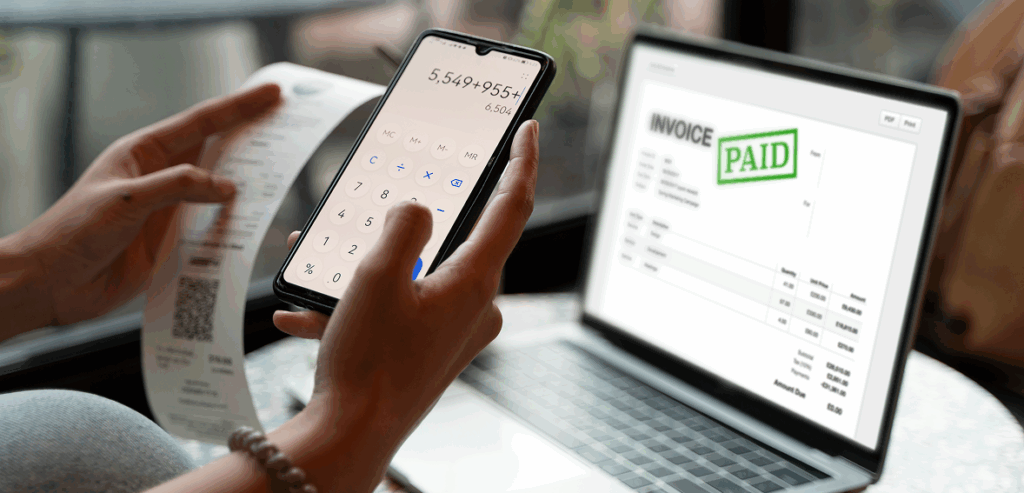
By Sharon Santos July 15, 2025
The payment experience at a med spa is more than just a transaction. It shapes how clients feel before, during, and after their appointments. From the moment a deposit is made to the time a refund is issued, each touchpoint in the payment process contributes to the overall customer journey and impacts the financial health of the business.
Med spas face a unique challenge. They must balance clinical professionalism with hospitality, while also offering a payment experience that feels effortless and secure. The full payment cycle involves multiple stages—initial booking, deposits, check-ins, upsells, recurring memberships, post-treatment billing, and potential refunds. Each step has the potential to either build trust or create friction.
The Booking Stage: Where the Journey Begins
Booking a treatment is the first direct interaction many clients have with a med spa. It sets the tone for the rest of the experience. A smooth, modern booking system that integrates payments can increase conversion rates and reduce no-shows.
Online vs. In-Person Booking
Many med spas offer online scheduling tools. Clients appreciate being able to view available slots, choose their provider, and make a booking without calling. If the booking platform includes integrated payment links, clients can pay deposits immediately, which adds commitment and reduces last-minute cancellations.
In-person bookings at the front desk should also allow for secure deposit collection. Clients expect digital receipts, fast processing, and clear communication of cancellation terms. This is where a secure payment processing system is critical. It ensures that payments are encrypted and compliant from the start.
Importance of Transparency
At this stage, the spa must communicate its policies clearly. Clients should understand whether their deposit is refundable, transferable, or required for specific services. When policies are vague or inconsistent, confusion arises later, especially if changes or cancellations occur.
Deposits and Prepayments: Commitment and Protection
Collecting a deposit upfront benefits both the client and the med spa. It shows that the client is serious about their appointment and protects the business from no-shows and late cancellations.
Types of Deposits
Some med spas charge a flat deposit fee, while others require a percentage of the treatment cost. Others use a card-on-file model, where the card is held securely and only charged in case of a no-show. All of these strategies help stabilize scheduling and reduce last-minute losses.
Deposits should be processed using a PCI-compliant gateway to ensure card data is not stored insecurely. Tokenization allows the card to be securely held without exposing sensitive information.
Automating the Process
Automation reduces human error. A client who books online should receive a confirmation email with their receipt and appointment details. If cancellation or rescheduling is allowed within a certain window, the system should send timely reminders, helping clients show up on time and improving overall operational flow.

Check-In and Day-Of Payments
When clients arrive for their appointment, the payment experience should feel integrated with the rest of the visit. This is a key moment where the med spa must combine efficiency with professionalism.
Streamlined Front Desk Operations
The front desk should be equipped with a payment system that is fast, reliable, and easy to use. Clients may be asked to pay the balance of their treatment, upgrade to a different service, or add products during check-in. Staff should be able to access each client’s deposit history and outstanding balance quickly.
This stage is often when add-on sales happen. Whether it is a product bundle or a booster treatment, having payment tools that support one-click additions or upsells improves revenue per visit and reduces friction.
Using Contactless and Mobile Payments
Clients now expect modern payment options. Support for contactless cards, Apple Pay, and mobile wallets enhances the experience and ensures quick transactions. Aesthetic clinics should use merchant gateway security systems that support these methods while maintaining data protection.
During Treatment: Upsells and Enhancements
Although actual payments may not occur during the treatment, this stage presents revenue opportunities. Clients may be offered additional treatments, upgraded products, or packages that can be discussed with the provider and billed after the session.
Real-Time Additions
The ability to add charges in real time and sync them with the client’s file ensures that the payment process at checkout reflects everything that was agreed upon during the treatment. Staff should not have to rely on handwritten notes or verbal updates. Integrated systems improve accuracy and help with inventory tracking as well.
Checkout: Closing the Transaction with Clarity
Checkout is not just a financial step. It is the final impression a client has of the spa that day. A smooth checkout experience reinforces professionalism, while any hiccups can diminish satisfaction.
Linking All Charges Together
Aesthetic services often include multiple components. There may be service charges, product sales, loyalty points, tips, or adjustments to the original booking. At this point, the POS system should present a clear invoice that includes all line items.
If a client had a card on file, the front desk should ask for confirmation before charging it. If they are paying in a new way, the system should support secure entry and digital receipts. Clients also appreciate being able to split payments across cards or combine a gift card with another method.
Prompting for Tips Where Appropriate
Not all treatments warrant a tip. A secure payment processing system designed for med spas allows custom tipping prompts based on service type. For example, facials might include a tip prompt, while medical procedures like Botox may not. This protects the professionalism of medical providers while still rewarding estheticians and therapists.

Memberships and Recurring Billing
Many med spas offer monthly facial memberships or long-term treatment plans. These models are great for client retention but come with billing complexity. Managing recurring charges securely and transparently is key to maintaining trust.
Setting Up Automatic Payments
Recurring billing should use tokenized card storage. This way, the system can process payments on schedule without re-entering card details. Clients should be notified of upcoming charges and given receipts automatically.
The system should also handle plan changes, pauses, or cancellations easily. If a client wants to skip a month or upgrade, the billing system must accommodate that without requiring manual work or causing errors.
Handling Failed Payments
When a payment fails due to an expired card or insufficient funds, the client should be notified immediately. The system should allow them to update their card details securely. Regular monitoring and retry logic ensure minimal disruption to cash flow and prevent awkward conversations.
Post-Treatment Purchases
Aftercare products are a major revenue stream for med spas. Some clients buy them immediately, while others return days later. The payment system should make it easy to process these transactions and link them to the client’s original treatment.
Cross-Selling Opportunities
Clients often trust the provider’s recommendations. If a payment system supports personalized receipts or after-visit summaries, it can include product suggestions based on the treatment performed. This subtle approach increases product sales while maintaining a client-centered tone.
Loyalty Programs
Loyalty points or credit for future treatments are increasingly common. If the POS supports loyalty tracking, clients can earn and redeem points without confusion. This reinforces retention and encourages more spending over time.
Handling Refunds and Adjustments
Refunds are sensitive but inevitable. Whether due to a cancelled appointment, a bad reaction, or a change of mind, refunds must be handled with empathy and clarity. The financial process behind them should be smooth and documented.
Clear Refund Policies
Clients should be aware of refund eligibility before booking. Whether a deposit is refundable or only transferable, the policy should be restated at checkout and visible on receipts or confirmation emails.
When a refund is issued, it should be linked directly to the original payment record. This prevents errors and supports compliance with both financial and data protection regulations.
Partial Refunds and Adjustments
Sometimes, only part of a service is refundable. A PCI-compliant gateway allows partial refunds without voiding the full transaction. This is especially useful when a client is not satisfied with one part of a multi-step service but completed other parts.
In such cases, documentation is important. Staff should log the reason for the refund and whether any products were returned. This supports transparency and protects against disputes or chargebacks.
Chargebacks and Dispute Management
Chargebacks occur when a client contacts their bank to reverse a charge. In the med spa industry, where outcomes are subjective and often aesthetic, chargebacks can happen even if the service was provided correctly.
Documentation is Key
To defend against chargebacks, the spa must have time-stamped records, signed consent forms, proof of services rendered, and receipts. Using a payment system that integrates with client profiles makes it easier to produce this information if needed.
Preventive Measures
The best way to handle disputes is to avoid them. Clear communication, secure payment processes, and proactive customer service reduce the likelihood of complaints. A system that sends post-treatment follow-ups and satisfaction surveys can catch issues before they escalate.

Reporting and Revenue Tracking
Every step of the payment journey should feed into backend analytics. A med spa’s success depends on understanding where revenue comes from, what services are most profitable, and where inefficiencies lie.
Real-Time Reporting
Daily reports should include deposits collected, treatments billed, tips received, and refunds issued. These metrics help management adjust staffing, set targets, and plan promotions.
Service-Level Revenue Insights
Not all treatments yield the same margin. Payment systems should allow reporting by service type, provider, and even by day or week. This allows smarter inventory planning and scheduling decisions.
Enhancing Client Trust Through Payment Clarity
Every payment touchpoint is also a communication point. When clients feel secure and well-informed, they are more likely to return, refer others, and spend more. The role of a merchant gateway security system is not only to protect transactions but to support transparency and client satisfaction.
Digital Receipts and Invoices
Clients expect records of what they paid and what they received. Email or SMS receipts should break down charges clearly and include contact information in case they have questions later.
Payment History Access
Clients may want to review past treatments, re-order products, or track their spending. A good system allows staff to pull up payment history quickly or even provides a self-service portal for the client.
Conclusion
The med spa payment journey is complex but deeply tied to customer satisfaction and financial performance. From booking and deposits to checkouts, recurring billing, and refunds, every step must be intentional, secure, and aligned with client expectations.
Choosing the right secure payment processing tools and integrating them into daily operations helps med spas create smooth, trust-filled experiences. These tools should support flexibility, protect data, and provide insights into how money flows through the business.
By mapping and optimizing each payment touchpoint, med spas can reduce friction, increase revenue, and build long-lasting relationships with their clients.
FAQs
Why is the med spa payment journey more complex than other industries?
It involves multiple touchpoints like deposits, upsells, memberships, and refunds. Each stage has specific needs, and client expectations are high due to the personal nature of the services.
How can med spas improve their checkout experience?
They should use integrated systems that handle multiple services, allow contactless payments, provide digital receipts, and support tipping rules based on service type.
What role does compliance play in the payment process?
A PCI-compliant gateway ensures that card data is handled securely at every stage. It also helps avoid chargebacks, fraud, and potential legal risks.